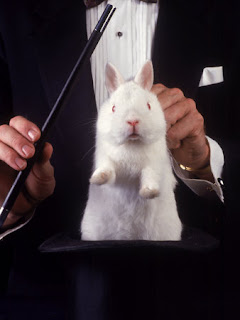
It sometimes feels like the process of turning Madroño Ranch: A Center for Writing and the Environment from dream to reality is like trying to pull a rabbit out of a hat. What in heaven’s name do we know about bison? Chickens? Land management? Writers’ residencies? Off-the-grid architecture? Running a business? We’ve spent our adult lives raising children, writing, editing, and teaching. There’s a whole lot of nothing between where we’ve been and where we’re going.
But, like magic, remarkable people have appeared and pulled ideas and answers out of what looks to us like empty space. Some of them we’ve known for years; some we’ve met recently. Here’s a quick rundown of some of the most magical of them:
There’s no way we could even contemplate this project without the enthusiasm, hard work, raucous good humor, and skills of Robert Selement, the manager of Madroño Ranch; his wife Sherry; and their children Ashlie, Brittany, and Greg. Robert can fix or build anything. Sherry can grow, cook, and take care of anything—witness their yard full of orphaned fawns, abandoned ducks, stray geese, random peafowl, countless dogs and cats, and other vagrant species too numerous to mention. Not only do Ashlie and Brittany do the heavy labor, they do it fashionably, and nobody knows the ranch better than Greg—just ask him!
Hugh Fitzsimons is the dueño of Thunder Heart Bison and a childhood acquaintance of mine whom I reencountered four years ago at the Sunset Valley Farmers Market. Hugh supplied us with our initial herd and has patiently schooled us in the ornery ways of bison, graciously fielded numerous panicked phone calls, and hospitably allowed us to invite ourselves to his South Texas ranch to see his fascinating and humane operation in action. Larry Butler and Carol Ann Sayle of Austin’s amazing Boggy Creek Farm have also been inspirational figures, as well as providers of wonderful produce and models for our own chicken-wrangling efforts.
Glee Ingram and Anne Province spent a weekend at the ranch with me hashing out the mission statement. Glee runs Growing Designs Inc., a landscaping firm in Austin, and is also the founder of Greenbelt Guardians, who lovingly care for Austin’s Barton Creek Greenbelt; her experience with the complex interactions of Hill Country landscapes and the built environment has been hugely influential. Annie is the vice president of the Academy of Oriental Medicine at Austin; she has an M.B.A. from Texas A&M and a master’s in religion from the Episcopal Theological Seminary of the Southwest, and was for many years an administrator at St. Edward’s University, where she still teaches. Her business background has been invaluable to a couple of liberal-artsy flakes like us.
The inimitable Steven Tomlinson, professor at the Acton School of Business and award-winning playwright, graciously allowed us to pick his brain and ask all kinds of stupid questions over breakfast at the Kerbey Lane Café. Jim Magnuson, head of the Michener Center for Writers at UT Austin, was an early and unflaggingly enthusiastic fan of the idea. Divit Tripathi came out to the ranch and shared his expertise on site planning (and chickens). S. Kirk Walsh, the moving spirit behind the Austin Bat Cave, and her husband, filmmaker and writer Michael Dolan, also came out to the ranch and offered a writer’s perspective on what we were up to. Pliny Fisk, cofounder of Austin’s Center for Maximum Building Potential, and architect Logan Wagner offered inspiration in thinking of how the built environment at Madroño might mesh with the center’s mission and vision.
Caitlin Strokosch, Russ Smith, and the gang at the Alliance of Artists Communities continue to be an invaluable resource for us and many others hoping to turn similar dreams into reality. Peter Barnes of the Mesa Refuge in California and Jalene Case of the Sitka Center for Art and Ecology in Oregon graciously gave us tours of their wonderful facilities and answered more of our seemingly endless supply of stupid questions.
All of these people have brought unexpected and wonderful things to our metaphorical table. It should go without saying that without their expertise, encouragement, and time, we wouldn’t have gotten even this far—but it’s worth saying anyway.
What we’re reading
Heather: Matthew Fox and Rupert Sheldrake, Natural Grace: Dialogues on Creation, Darkness, and the Soul in Spirituality and Science
Martin: Jane Jacobs, The Death and Life of Great American Cities
